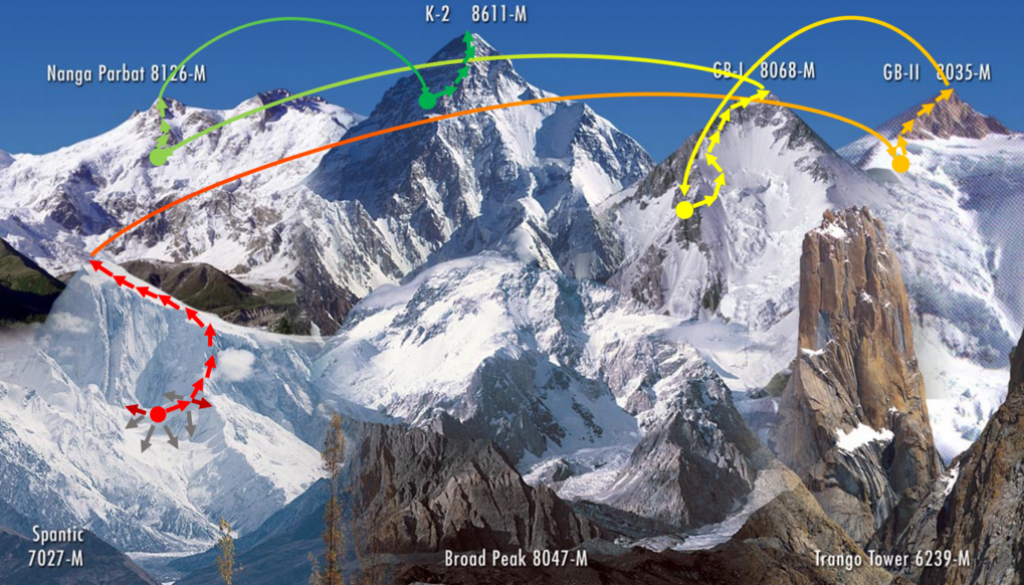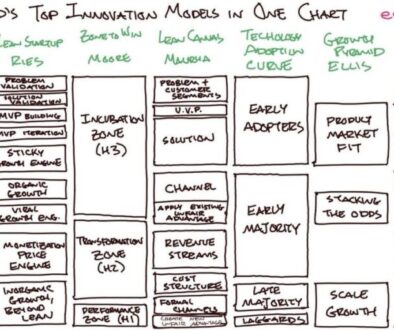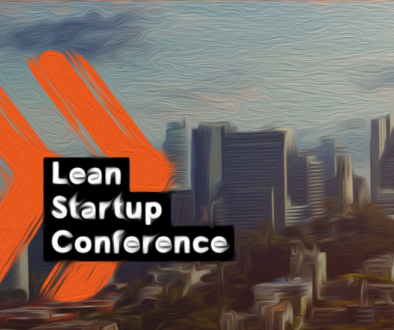Climbing Your Business to the Peak
In my last post, I shared a model of how a math concept — inverted u-shaped curves — can help us think of a framework for visionary design. Among the readers, there has been a lot of excitement about this idea and how it can help designers and product strategists better think about that work. In this same spirit, I’ll share how an optimization algorithm is like lean startup methods, and how understanding this connection can lead to an even leaner startup approach.
Enter hill-climbing + simulated annealing.
Hill-climbing is a simple algorithm for finding a local maximum point. Here’s a simplification of hill-climbing. You start from a point and take a step in each direction (N, NW, W, SW, S, SE, E, NE) and check for which heads highest up the mountain. Choose the highest, and repeat.

In the diagram, the best is the bright red one, so you continue that way, until:

And so on, all the way to the peak:

And this peak can be great, unless this is a short mountain. Hill-climbing only finds a local maximum. So, if you’re able to expand the view a bit, you see a bit more context:

In this case, not too bad, we’re at Spantic 7027m high. That said, it’s also possible you start in a foothill or even a plain or an ocean, as is the case for most of the Earth’s surface.
Keep in mind, with this algorithm, you don’t really have the benefits of seeing across a long distance to notice a higher mountain nearby, you have to keep taking a step and measuring. That said, if you want to try to find another peak while operating without sight, you essentially need a series of random teleports to other points on the surface and going from there. This follows another algorithm called Simulated Annealing.
In this case, you’ll sometimes jump to a point with the potential for going higher and other times with the potential of going lower. You’ll need to hill-climb at each point. When that works, it can look like this:

And eventually, you can potentially hop all the way to the top:

In the image, it jumps up to K-2. The only thing higher on the Earth is Everest. 🙂
Before I get to how this is like Lean Startup, which you might already notice, you may want to know why this is called simulated annealing. In metallurgy and materials science, annealing is the process of cooling molten metal at a rate that makes it stronger and more durable — ideally you want to maximize tensile strength and yield strength. During this, the amount of energy in the system is decreasing, so you teleport smaller and smaller distances with each step. The combination of hill-climbing and simulated annealing can be especially potent.
In Lean Startup, here are the analogues:
- Hill-climbing is Growth Hacking — measuring each step to determine whether it is better or worse is a function of run split tests (A/B Tests).
- The Teleports in Simulated Annealing are pivots — and you essentially take smaller and smaller pivots as you know your customers, business market, and users better.
- Measuring height is the key to the whole endeavor — A key in Lean Startup is finding a metric that matters and finding a way to quickly and accurately assess whether each position in the business model is viable or not. That de-risking work is trying to understand the value of the business at this point in time — how high this point on the mountain is.
- The terrain is truly broad and infinite, as there are so many things in the product-solution-business space that can be tested.
Seen from this perspective, the search for an ideal business is essentially an optimization problem over an infinite space. And once seen from this light, there are other optimizing algorithms and heuristics that can be considered. I’ll explore some of that in future posts. (I already have pages and pages written on this that I’m trying to edit appropriately).
One note — I’ve found that this resonates very well with engineers and computer science researchers whom I coach. It all clicks in place when I point out that this whole process is an optimization algorithm or search over an infinite space.
Please let me know what resonates with you. We’re all in this together!


